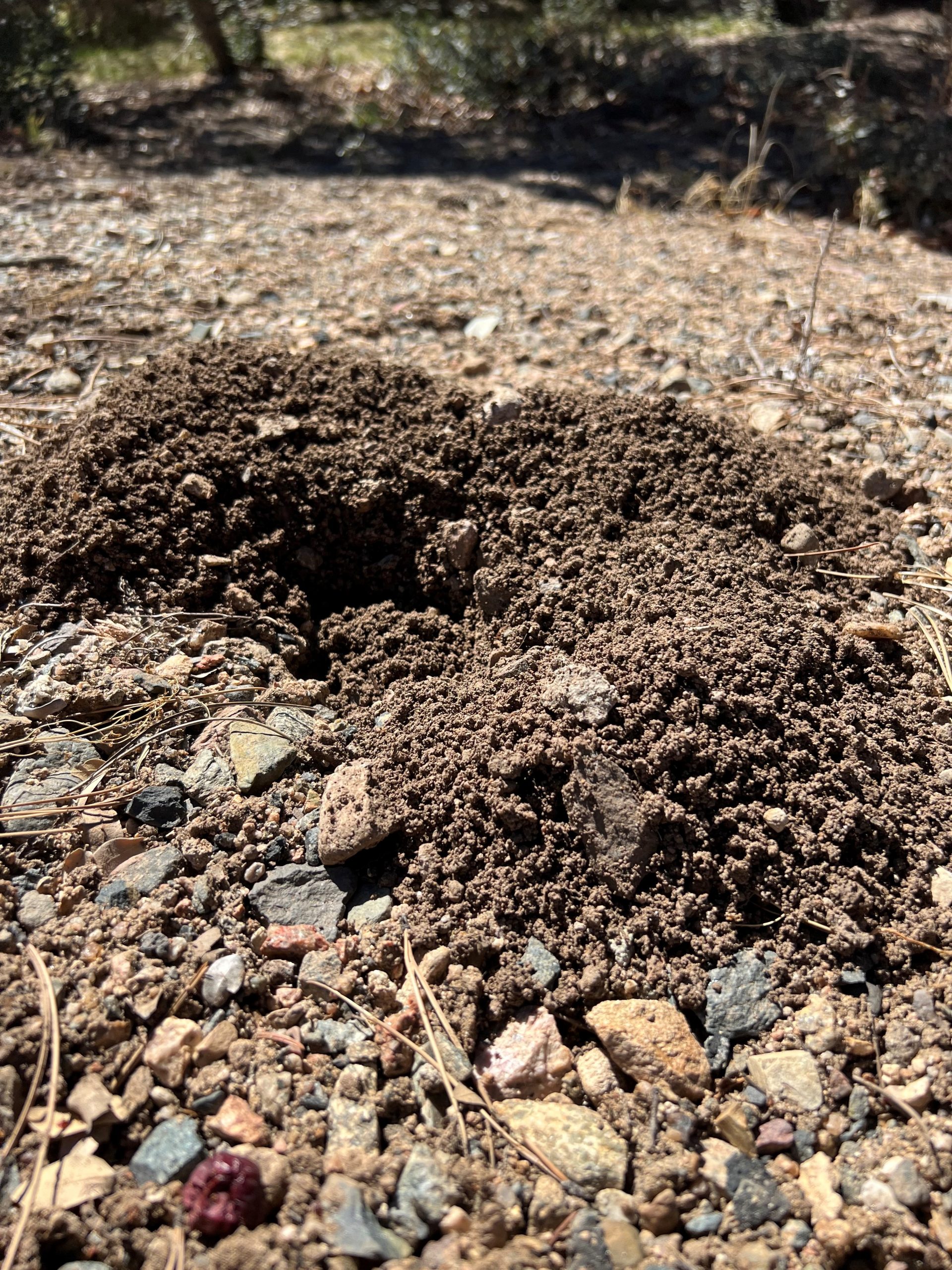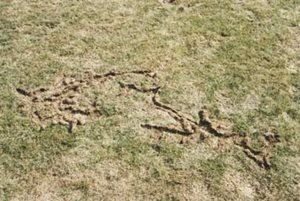
Growing a beautiful green lawn sometimes means addressing the animals that want to call it home as well. Few animal pests are more frustrating than the common mole. Learning to get rid of moles in your yard can lead you down many dead ends as you try to solve the problem. Repellents won’t do much, while many traps sold for homeowners are difficult to set properly. Make sure you’re getting rid of these burrowing rodents from the start by using the right methods.
How to Recognize a Mole Problem
Moles dig extensive tunnels a few inches below the surface of the soil. They also create scattered mounds a few inches high and almost perfectly round. These are known as mole hills and are easily confused for the mounds made by gophers.



When trying to scope out the extensiveness of an infestation, you may think you need to find or count mounds. However, the tunnels themselves are much more important. All active tunnels need to be addressed since molehills are temporary and only used once.
Moles vs. Burrowing Animals
Just because you see a hole in your yard, do not assume it is a mole. Different species of pest animals dig up your yard. Skunks, opossums, and raccoons will dig up your yard looking for food. Chipmunks, Norway rats, and shrews create small holes and burrows in your yard.
You may assume you have moles because you see tunnels or mounds on your lawn. But voles and gophers can also cause similar-looking damage. One key way to know you have moles is the appearance of rounded mounds with no visible opening.
Moles vs Gophers

-225x300.jpg)
Gopher mounds are crescent or horseshoe-shaped and usually have a visible opening where the critter has entered or exited. Shrews can cause damage by nibbling on landscaping plants, but they rarely make real tunnels and don’t do much damage to lawns aside from digging shallow holes.
Moles vs Voles
Both critters dig tunnels through your yard, and you can see the damage to your lawn. A mole tunnels underground, lifting the soil upwards and making your yard “squishy” when you walk on it. Homeowners can recognize vole tunnels in their yard by looking for shallow, snake-like runways through the grass, often accompanied by small entrance holes about 1-2 inches in diameter. These runways are typically well-worn paths where the grass has been nibbled down to the soil.


Why Are Moles in the Yard?
Moles move into a suburban or rural yard because they’re after insects that make up the bulk of their food supply. They’re less common in some urban environments for this reason. They love earthworms that accompany healthy soil, but they’ll also eat larvae and grubs that can damage lawns. Unfortunately, they also dig right through the root zone of the grass and pull roots apart to get at grubs. This results in patches of dead lawns and brown grass that spread as the moles continue digging for fresh food. They may control some common lawn pests, but they also cause a lot of damage in return.
Unless you have a large property where some isolated damage at the edges isn’t a concern, you’ll want to control moles to have any chance of a green and healthy lawn around your home.
Mole Problems
Mole tunnels are less likely than gopher tunnels to reach under your foundation or to displace large volumes of soil. However, they can still do extensive damage to lawns and may dig enough voids around the foundation to cause settling and cracking. Just one or two moles on your property can destroy the majority of your lawn over the course of a few months.
A single mole can dig 160 feet in one night. Even though properties usually only attract two to three moles at the most since they are territorial, that means they can cause serious soil movement within just a few weeks. It’s best to control them at the earliest signs to avoid any potential damage due to shifting soil around your home’s foundation.
Why Mole Repellents Don’t Work
Ultrasonic repellents sound like the perfect solution. They’re supposed to rely on high-pitched frequencies out of your hearing range to drive away rodents like moles. Real-world testing shows that moles aren’t bothered much, even by the loudest ultrasonic devices. They might take a slight detour around the device, but they won’t stay away from a structure just because you’re using them.
Castor oil is another commonly quoted home remedy for moles. Some people call for pouring it over the ground’s surface, while others say it should be dumped into the tunnels. Neither method will do much to stop moles, even if you spend plenty of money on gallons of the liquid. Coffee grounds and dish soap aren’t deterrents to moles either, especially when there are grubs or larvae they really want to eat.
The biggest issue with DIY solutions, even traps you set yourself, is that mole tunnels are too extensive for most homeowners to find. Even if you spread a lot of repellent, the moles can simply dig elsewhere and find new territory. Only the smallest postage stamp lots could ever realistically rely on mole repellents if they worked.
Mole Prevention Before Mole Infestation
Keeping moles out works much better than letting them in and then trying to get rid of them. Hardware cloth around areas that might host grubs or larvae stops moles in their tracks. If you have a shrub that hosts a lot of beetles in the summer, you may want to surround it with mesh to stop access to their grubs in the soil below. This kind of exclusion also works for garden beds, but it’s a big investment for an entire lawn.
Planting dense borders of marigolds and alliums may help if you have relatively low mole pressure in the area. See signs of mole damage on the neighbor’s lawn? It’s time to step up to active control methods.
How Critter Control Gets Rid of Moles in Your Yard
As long as your yard has worms or grubs, more moles will come. Removing the current moles is a good step, but you’ll need to back it up with exclusion methods and ongoing mole maintenance. The first step is to find every active mole tunnel and set up traps. Once the population has been reset, it’s much easier to keep the moles from returning. Consider treating your lawn for grub or larvae infestations, although you don’t want to discourage earthworms since they aerate the soil.
Moles can make a mess of your lawn in a short period. Act quickly if you start to see mounds of fresh dirt piling up or the snaking patterns of tunnels through the grass. Critter Control is happy to help with a comprehensive approach to mole trapping and exclusion.
We can help you get rid of mole problems. Call today: 1.800.274.8837
Learn more about mole removal.
Get them out.
Keep them out.®
Experiencing a wildlife or pest issue? We can help! Complete this form and your local Critter Control® office will contact you to assist.
- Moles in the Garage
- Moles in the House
- Mole Trapping
- Moles in the Basement
- Moles in the Garden
- How to Identify Moles in Yard
- Moles vs. Voles
- Do Moles Bite?
- Do Moles Carry Disease?
- Eastern Moles
- Hairy-Tailed Moles
- Mole Hills
- Mole Repellent
- Mole Tracks
- Shrew Moles
- Star-Nosed Moles
- Types of Moles
- Mole Diet
- What Is a Mole?
- Damage Caused by Moles
- Mole Identification
- Mole Droppings
- Mole Appearance